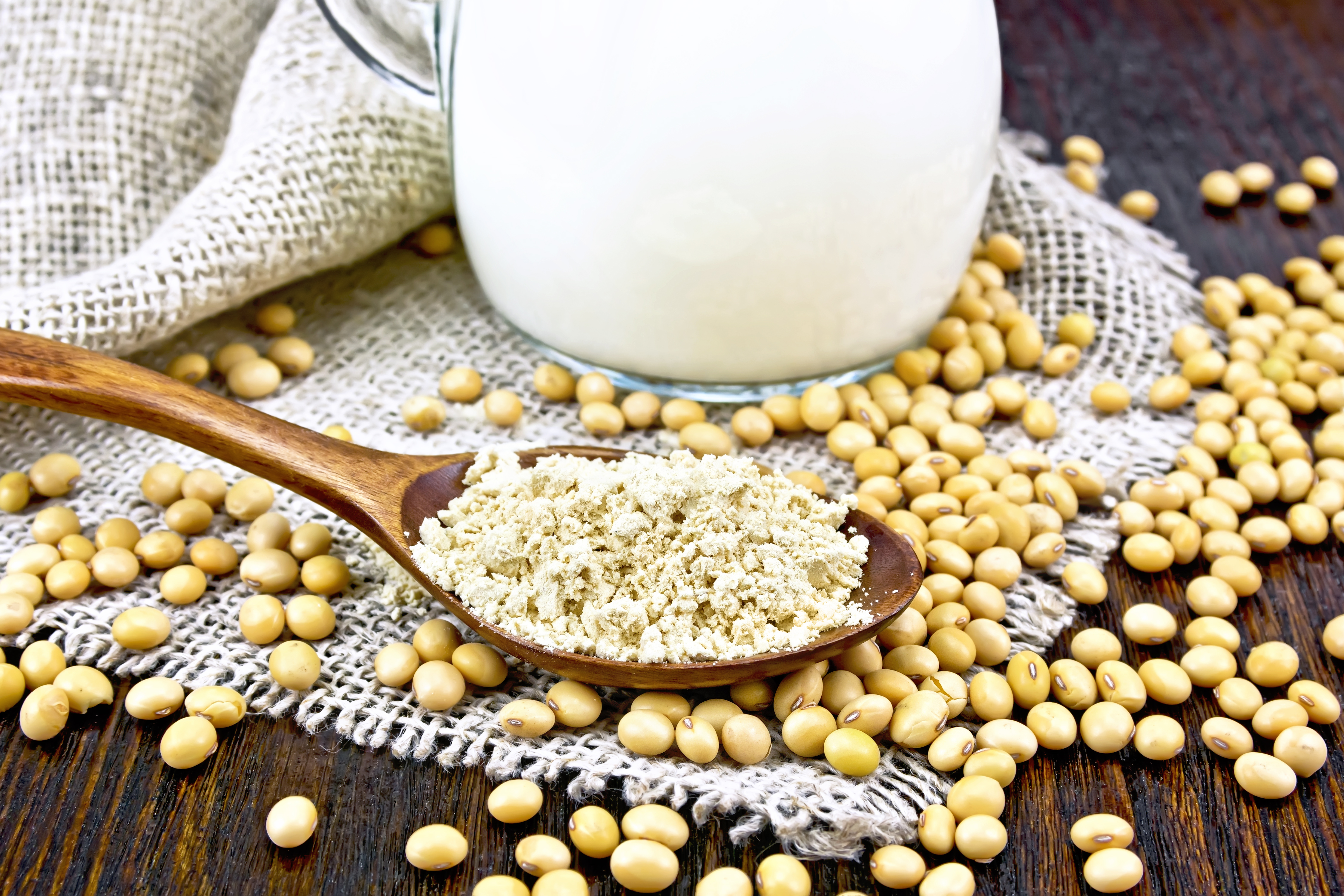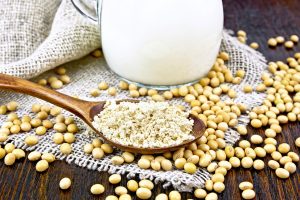
Soy is a high quality plant protein
Soy is a high-quality plant protein
Soybeans are not much of a dietary staple in the western world. But traditional soy foods, like tofu, miso, and tempeh, have formed the basis of the diet in East Asia for centuries, where they’re valued not only for their versatility but also for the healthy nutrition they offer.
Are you a fan of soy protein? With so many variations, soy can be a delicious extra in many recipes or even the main focus for a nutrient-packed healthy meal.

Soy Options
- Edamame are fresh green soybeans. You can often find these in your grocer’s freezer, either in the pod or already shelled. After briefly cooking in salted water, they can be eaten as a snack or added to soups and salads.
- Tempeh is made from soybeans that are partially cooked, allowed to ferment and then formed into a firm block. Since tempeh is fermented, it’s a source of “good bacteria,” or probiotics. Tempeh has a meaty flavor and firm texture that holds its shape, so it’s great for salads and stir-fry dishes.
- Miso is a paste made from fermented soybeans, which means it also contains probiotics. It’s used as base for soup as well as an ingredient in sauces, salad dressings, and marinades. There are different varieties, and the color can range from light yellow to very deep brown. In general, light miso is less salty and milder in flavor than dark miso.
- Soy milk is made from dried soybeans which are soaked in water until they’re rehydrated, then ground with water. The resulting milk is sold as a beverage or made into yogurt. Soy milk and soy yogurt each have about 7 grams of protein per 8 ounces (250 ml) serving. You can use soy milk as a beverage on its own, or you can substitute it for regular milk in most recipes or in protein shakes.
- Soy nuts are roasted whole soybeans. They make a nice snack on their own, and they’re also good in salads, trail mix and on cereal. Soy nuts (and soy nut butter, which is made from ground soy nuts) have a bit more protein and a bit less fat than peanuts or peanut butter.
- Soy protein powders and meat substitutes are made from soybean flour that’s had most of the fat removed. The powders can be added to shakes or stirred into oatmeal, and the soy meat substitutes can be used in all sorts of recipes in place of meat or poultry.
- Tofu is essentially a cheese that’s made from soy milk. It ranges in texture from extra firm to extra soft and has a very mild flavor. It mixes well with anything from spicy sauces to naturally sweet fruits. The firmer type of tofu is good for grilling or stir-frying, while the softer, creamier style is good in shakes or sweetened and topped with fruit as a dessert.
Soy Is Nutrient-Packed
While all beans provide protein, soybeans top the list when it comes to protein quality. Proteins are made up of small building blocks called amino acids. Some amino acids are termed essential, which means that we have to get them from foods because our bodies can’t make them. A protein that contains all the essential amino acids is termed ‘complete’—and soy is one of the few complete proteins in the plant world.
Soybeans are low in saturated fat and, like all plant foods, are also naturally cholesterol-free. Soybeans also offer up calcium, magnesium, phosphorus, potassium, and B-vitamins, along with omega-3 fats.
If you’re trying to work more plant protein into your diet, you might want to give soy a try. With so many soy products to choose from, it’s easier than ever. Here are some of the most popular forms of soy.
Soy is a high quality plant protein
Quick Guide to Tofu
There are so many types of tofu that can seem confusing. I’m afraid many westerners dismiss tofu but it can taste great, and with so many benefits it’s worth finding a few favorite types of tofu.
Silken tofu has the most moisture of all types of tofu. It has a soft, very smooth, custard-like texture and tends to fall apart easily. It also comes in different degrees of firmness, so don’t assume that all silken tofu is soft. Silken tofu is the best tofu for whipping up in the blender or food processor. Once it’s blended, silken tofu adds a smooth texture and nice protein boost to shakes, soups, and sauce. Silken tofu can be turned into a healthy dessert when it’s blended with fruit, a dab of honey and a dash of cinnamon. Or you can blend it with garlic and herbs and use it as a tasty dip for raw veggies.
Soft or medium tofu holds its shape a bit better than silken tofu, and it’s often mashed with a fork into a soft crumbly texture that makes a nice meat substitute in foods like pasta sauce. It’s also often used to make an ‘eggless’ egg salad by mashing with a bit of mustard and low-fat mayonnaise or with some avocado.
Firm or extra firm tofu has the meatiest texture of any tofu, which means it holds up to stir-frying, roasting or grilling. To make it even chewier and more ‘meat-like,’ some people slice it up and freeze it (which will change the color, but not affect the taste) before using it in recipes.







